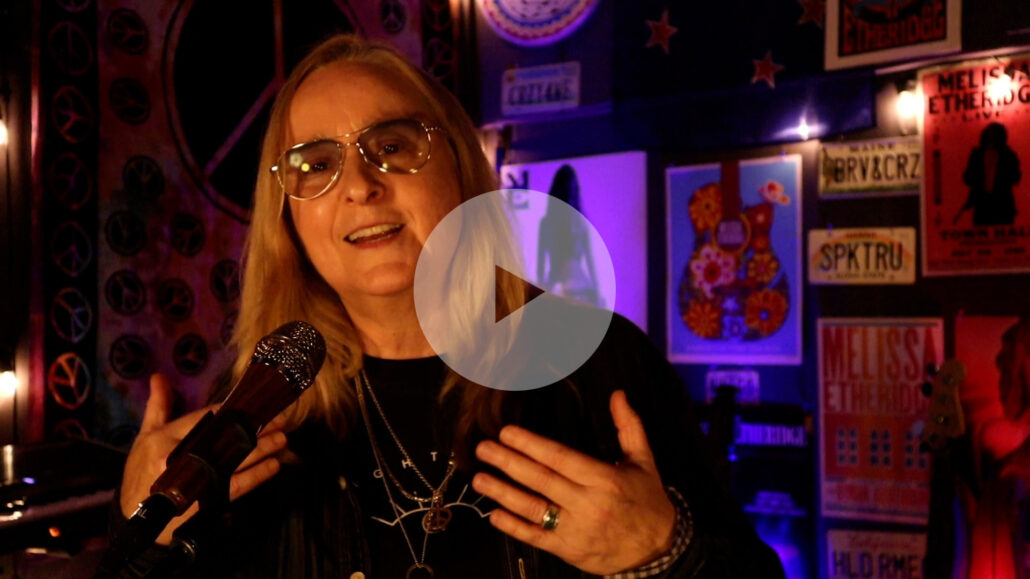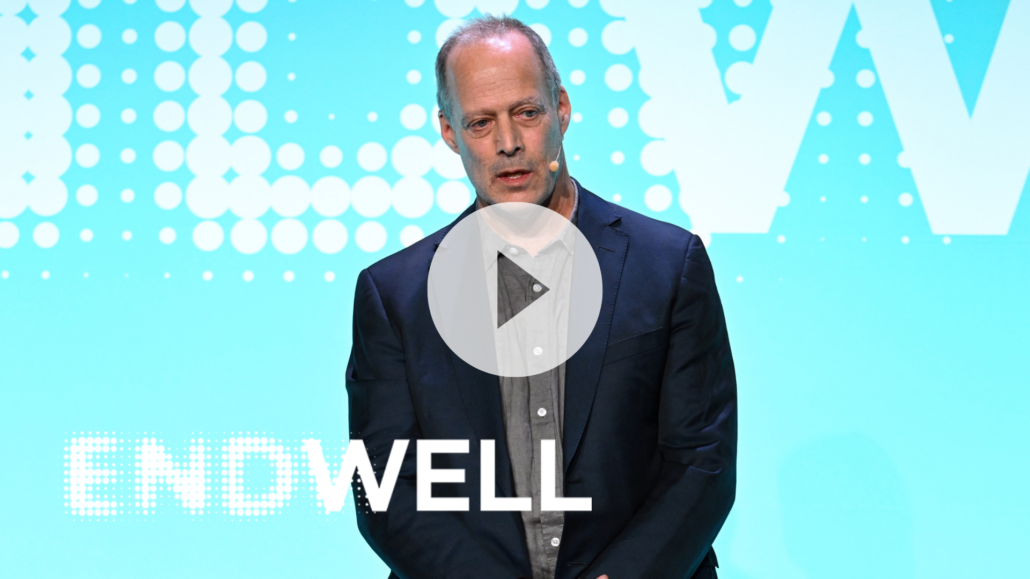Who and how are we when we walk in the door to care for someone who is seriously ill or dying? This question gets to the heart of medical anthropologist and Zen Buddhist Abbot Roshi Joan Halifax’s groundbreaking work in compassionate dying with clinicians and other caregivers. Learn how we might all cultivate attention and empathy and bring awareness of our own somatic, affective, and cognitive biases so as to more fully provide compassion-informed care—for others and ourselves.
Watch next
Roshi Joan Halifax on Compassion and Dying
2024 ⸱
Roshi Joan Halifax, Ph.D.
Share
About the speaker(s)
Roshi Joan Halifax, Ph.D. is a Buddhist teacher, Founder and Head Teacher of Upaya Zen Center in Santa Fe, New Mexico, a social activist, author, and in her early years was an anthropologist at Columbia University (1964-68) and University of Miami School of Medicine (1970-72). She is a pioneer in the field of end-of-life care. She has lectured on the subject of death and dying at many academic institutions and medical centers around the world. She received a National Science Foundation Fellowship in Visual Anthropology, was an Honorary Research Fellow in Medical Ethnobotany at Harvard University, was a Distinguished Visiting Scholar at the Library of Congress, received the Pioneer Medal for Outstanding Leadership in Health Care by HealthCare Chaplaincy, the Sandy MacKinnon Award from Covenant Health in Canada, Pioneer Medal for Outstanding Leadership in Health Care, received an Honorary DSc from the Royal College of Surgeons in Ireland. She has received many other awards and honors from institutions around the world for her work as a social and environmental activist and in the end-of-life care field.
From 1972-1975, she worked with psychiatrist Stanislav Grof at the Maryland Psychiatric Research Center with dying cancer patients. She has continued to work with dying people and their families, and to teach health care professionals and family caregivers the psycho-social, ethical and spiritual aspects of care of the dying. She is Director of the Project on Being with Dying, and Founder of the Upaya Prison Project that develops programs on meditation for prisoners. She is also founder of the Nomads Clinic in Nepal.
Her books include: The Human Encounter with Death (with Stanislav Grof); The Fruitful Darkness, A Journey Through Buddhist Practice; Simplicity in the Complex: A Buddhist Life in America; Being with Dying: Cultivating Compassion and Wisdom in the Presence of Death; Standing at the Edge:Finding Freedom Where Fear and Courage Meet; Sophie Learns to Be Brave; and her latest work, In a Moment, In a Breath.
Transcript
I feel like dancing when I hear this music! But anyway, I want to begin first by thanking Shoshana, Molly, Tracy, and the incredible team for magnetizing all of you and also us who are trying to, you know, communicate a little bit about what we’ve done in this field. So, let’s just do it.
I also want to ask you two questions. If you have lost someone close to you in this past year, would you stand up?
Thank you.
And if you have come alongside someone who is dying, whether a family member, a friend, a patient, or someone you’re serving, would you please stand up?
Thank you so much.
It’s really extraordinary to be in your company, to be in the company of loss, and also in the company of care. One thing that all of us share in this room is that all of us will die. How we die, we really don’t know.
I love the name of this gathering, End Well, because it brings to us the sensibility that no matter how complicated this final developmental experience of our lives is, no matter what we’re given, no matter what arises, may we end well.
As so many of you know in this space, we really can’t say what those final minutes, hours, or days will be like. Even if we elect to hasten our death, we still don’t know.
This work opened up for me when I was a young medical anthropologist at the University of Miami School of Medicine. I worked all over Dade County Hospital. It was really an extraordinary experience. That was 1970. By the way, I’m 82, so I’ve been at this a little while.
One of the things that was clear to me as I moved over the entire hospital system and it was disturbing, because my grandmother in her Savannah house at Abercorn street, would take care of her neighbors when they were dying (she would dress their hair, pick out the outfit they’d wear in the coffin), but what I saw in the context of medicine in the 1970s was that the most marginalized people in the hospital system were dying people.
Medical students, residents, and interns, as they moved through their medical training and service, were so not prepared for the psychosocial, spiritual, and existential aspects of what it means to come alongside people who were in this journey.
Then, some years later, I married the psychiatrist Stanislav Grof, who worked with LSD as an adjunct to psychotherapy. It was in that context that I saw so clearly that care of the dying was and is sacred work.
I know in our secular society that’s like, “Uh, I’m not so sure about that.” But honestly, when you sit with dying people, you realize that your own mortality is present, not only is the mortality imminent in relation to that person whom you’re serving or coming alongside. That is truly sacred work. It’s like a contemporary rite of passage.
Now, I saw in this early work that not only were dying people often suffering (not all, I felt blessed to have the experience of coming alongside dying people who were so open, and so accepting, and so curious about their experience of dying), but not all by any means.
I also saw clearly and it was hard for me to take, honestly, that not only were dying people suffering, but also clinicians. I was grateful that the world of neuroscience began to look at what is compassion? What are the neural networks associated with compassion? In social psychology the same thing.
What was very uplifting for me, though compassion is of course emphasized in nursing and medicine in general, it was very poorly understood. In fact, many clinicians were suffering from a deficit of compassion, driven out of them by virtue of the context in which they were trained.
What I felt deeply moved to do was to understand really what compassion really was, why there was resistance to it, and why people often felt that compassion was threatening.
Then, there was this upsurge in research in neuroscience and social psychology which was truly extraordinary. It showed us that compassion is a triple win: it not only benefits those who receive it, it benefits those who observe it, who witness it and those who experience it. Everything from being morally uplifted to experiencing improved immune responses and even longevity. You think about Nicholas Winton, another story but not enough time.
I was so fortunate to begin this work with clinicians more directly as the years passed. By the early 1990s, when the AIDS crisis was just a heavy weight in our world, beginning to develop training programs for clinicians in the kind of care that I think many of you give today.
At a certain point, I received a wonderful gift from the Kluge Foundation. (By the way, I want to thank the Soros Foundation and the Nathan Cummings Foundation for funding this early educational work that we did in the end-of-life care field.)
I was also appointed as a Distinguished Visiting Scholar at the Library of Congress. In that time, I had the extraordinary opportunity to put aside my teaching and administrative responsibilities and also some caregiving responsibilities and develop a heuristic map of compassion. Out of which came a tool that has been life-changing for me personally.
That tool is called GRACE. It’s a tool that allows you to nourish compassion as you’re interacting with someone or in a situation where suffering is very present.
GRACE is mnemonic. It stands for:
G: Gathering your attention—the cultivation of what it means to be really present.
R: Recalling your intention—to be of service to others.
A: Attuning to yourself—bodily, affectively, and cognitively—and then expanding your subjectivity to sense into the experience of another.
C: Considering what will really serve, based on that perceptual frame.
E: Engaging and ending.
That’s the quick, quick version.
What’s wonderful is to see this tool move through medicine, education, law, and even business. There’s a National GRACE Association in Japan and GRACE study groups all over Japan and it’s wonderful.
It reminds me of something that the palliative care doctor Sunita Puri said: “The prelude to compassion is our willingness to see.”
I believe that’s what we’re doing here today in this great hall. We are gathering our attention, remembering why it is so important for us to meet the truth of our mortality, and, to most importantly, be of benefit to others.
We sit here, in touch with our own subjectivity, but we’ve also expanded our subjectivity to include each other. We’re asking ourselves: what will really serve in the world we find ourselves in today? What will really serve?
And then, how do we go forward with boon-bestowing hands? How do we meet the world in a way that is unselfish, tender, and caring?
I’m so grateful for the opportunity to share a little bit with you today, knowing that this is your aspiration—and mine as well.
Let us, individually and as a community, affirm our vows: to look deeply, and to meet our tangled world, to meet the truth of mortality, and to actualize compassion to the best of our ability.
Thank you for your kind attention.
Show more
Join the Movement
Get the latest news and fresh ideas from the frontlines of all things end of life.

